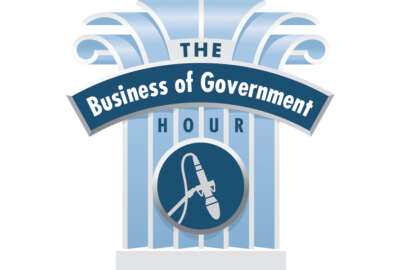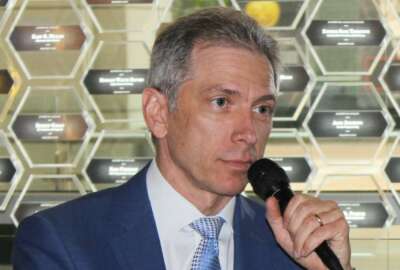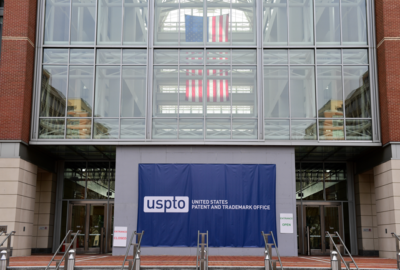Commerce Department moves to close patent gap for women and minorities
The U.S. Patent and Trademark Office has for years operated a plan to help more women and minorities gain access to the patent system and fill the patent gap.
Best listening experience is on Chrome, Firefox or Safari. Subscribe to Federal Drive’s daily audio interviews on Apple Podcasts or PodcastOne.
The Commerce Department, through the Patent and Trademark Office, has for several years operated a plan to help more women and minorities gain access to the patent system and fill what has been known as the patent gap. Now that effort is notched up a gear. For more on what’s going on, Federal Drive with Tom Temin spoke with USPTO’s Deputy Commissioner for patents Valencia Martin Wallace.
Interview transcript:
Tom Temin: And let’s frame the issue here, first – what is the patent gap and what is the perceived causes of it, do you think?
Valencia Martin Wallace: Well, the patent gap, specifically what we are looking into is women and other minority groups that are underrepresented in the IP community, the innovation ecosystem, and more specifically as inventors, and as patentees – patent owners. And how is it that from beginning stages of our young citizens, 3 and 4 years old all the way up through, that the education and the awareness of the STEM fields, invention, and innovation is just not there. And that culminates in the fact that when career choices are made, it’s not as inventors, it’s not as patentees it’s not as engineers and scientists. And really how that negatively affects our nation’s economy.
Tom Temin: So basically, then, the feedstock for granting intellectual property to people that aren’t that represented. It really backs up way before the patent system itself to education.
Valencia Martin Wallace: Oh, absolutely. As I mentioned, at the age of 3 and 4 years old, we need to start bringing our children, our youngest among us into the fold of STEM and technology, and not only bringing them interested in which for me is an exciting field, but also how do you invent the ideas that you have? How do you really create within that sphere of Sciences and Technologies, and just from the youngest of ages, all the way through their lifespan, building on that education, of science, of ideas, of turning those ideas into some invention of how to move into the IP system, and to really leverage what is here for our citizens to develop those ideas into patents. And then from there on, really, the education doesn’t end. The education of an inventor on how to be an innovator, on how to be an entrepreneur, and how to turn that invention into something that is a benefit to the individual as well as to our society.
Tom Temin: And from the U.S. Patent and Trademark Office point of view, what statistics do you have? What metrics do you have on the distribution of patents across the people that might be potential applicants?
Valencia Martin Wallace: We have been looking into this – USPTO – and studying identification of women, of minorities, and who enters into our system to take advantage of the patent system. And really, it’s been such a challenge for us. There’s not a lot of data that’s out there. But what we have found is specifically with women, is that we’ve done a lot in the last 20 years or so, to grow more women in the STEM fields. So where in 2006, we may have had 6% women, we have a little less than 13% women who actually have their names on patents, which is huge growth there, but still a long way to go. Especially when you see that women have grown not as fast as we would like, but still have grown into the science and technology engineering fields to 30% of scientists and engineers in the sphere now are women. Yet, only a little less than 13% actually have their names on patents. So there’s a great deal of work that still needs to be done in helping women get those ideas into the patents and to develop them further from there. And that women with other minority groups is just such a challenge and a struggle to find the data of where they are. We do know, though, that it’s much, much less within the IP system, community and innovation community minorities than there are women. But still, it’s a struggle and that’s one of the things that we at the USPTO are working on as well as collaborating with other sectors of the innovation and IP communities to identify demographics, identify not only in demographic form, but geographically and economically, what areas are we not moving into? Which groups are we not gaining access to. And changing that is quite the challenge. And not only identifying for each of those sectors, but each of those sectors of our community, then sharing that data so that collectively, we can have a greater impact in reaching underrepresented groups around our nation.
Tom Temin: We’re speaking with Valencia Martin Wallace, deputy commissioner for patents at the U.S. Patent and Trademark Office. So the current event then happening is that there was a National Council for expanding American innovation that goes back to the prior administration. Now it’s been renamed the Council for Inclusive Innovation – I think the acronym is CI squared. And it’s being chaired by the secretary of Commerce. So it’s moved up a notch, organizationally, but what else is there? What’s going on besides just a name change of an existing council?
Valencia Martin Wallace: Well, it’s an amazing council. And yes, we are so proud and so excited to have Secretary [Gina] Raimondo as the chair of our council. The council has been together for about a year and a half now. And the whole reason of being, how it actually came out is back in 2018, Congress put together the Success Act, which mandated that the USPTO, in partnership with the Small Business Administration (SBA) identify the numbers, identify where we are having issues within women and minorities in taking part in the IP system, specifically as inventors and patentees. Now, the report that came out from that in 2019, the Success Act report showed what we’ve been talking about already, and what most of us already knew: That woefully underrepresented women and other minority groups within the IP system. And from that came the idea, and the recommendation to stand up a council, the Council of Inclusive Innovation, formerly known as the NCEAI, where we would bring members of all sectors of the IP and innovation community together to address this issue, to address the fact that every step of the way every area of inventors life, we as a community have to come together to bring education forth and awareness. So the council’s main mission is that, is to develop this comprehensive, long term strategy that will have the appropriate impact not only today, but far into the future of bringing a more inclusive environment within the IP system, and creating and nurturing and supporting more inventors. And not only more inventors, but then more patent owners. And beyond that even having them move on to finding the appropriate funding and commercialization of their ideas that not only benefit the individual but benefit this nation.
Tom Temin: And who’s on the council?
Valencia Martin Wallace: I’m really, really excited about the members of our council. We have CEOs of industry that have stepped forth as part of this Council. We have university presidents that have also stepped forth, we have professional organizations within this sphere. We have independent inventors as well as small business owners. And the reason that I really shared each of those types of representatives that we have is because part of our issue is bringing our community together, the same as with if we want to have a greater innovation, ecosystem and innovation economy, we have to have a broader, more diverse series of ideas that get us there. It’s the same with this council. We have to have a diverse group of people and sharing their opinions, their best practices, their ideas for moving us forward and moving us forward with the large impact that collaboratively we will have
Tom Temin: I guess it’s safe to say that there’s not that much that patent examiner’s themselves can do because they only can rule on what is before them. So the real task is get more before them from more people, and therefore the intellectual property participation would increase in that manner.
Valencia Martin Wallace: Well, actually, I’m going to disagree with you there Tom. Because while yes, it is the main part of our job that examiner’s the supervisors over them and our executives are making sure that we are putting out quality products, we also are those experts in that field that can go out and do the outreach, do the education within our local communities across the nation, to help bring forth science, engineering, the benefits of it to all ages, as well as teaching them when how to develop your idea. We’re scientists and engineers – examiner’s are – so teaching on that, as well as teaching the patent system, and how to navigate it, and how to get the support and the access to resources that will help everyone from every walk of life have those benefits necessary to really develop into patents, and then to move on to being able to commercialize those ideas. So yeah, our main purpose is to make sure that quality patents are granted. But we are there to support all areas of our community in the development of science of ideas, and eventually, hopefully, quality patents.
Tom Temin: And this sounds like a long term effort, of course. Do you have metrics then by which this can be measured over time?
Valencia Martin Wallace: That is a great question, because as we were talking about earlier, one of the great issues is data. So in the strategy we are building through the council, that is one of the main areas that we are going to be working on. It’s not only how do you measure the impact of the initiatives, the actions that you’re working on, but every sector of our community has every sub sector that starting from a different point, not everyone is going to be as diverse or inclusive. So we need to start by helping them develop a maturity assessment, measure where they are now along this road, and help them to develop the actions and how to measure those actions for moving forward. So there’s no one, just one way of measuring this. It really is going to depend on the sector that they’re coming from, as well as where they’re starting. And part of our strategy is to help them build those measures.
Copyright © 2025 Federal News Network. All rights reserved. This website is not intended for users located within the European Economic Area.
Tom Temin is host of the Federal Drive and has been providing insight on federal technology and management issues for more than 30 years.
Follow @tteminWFED






